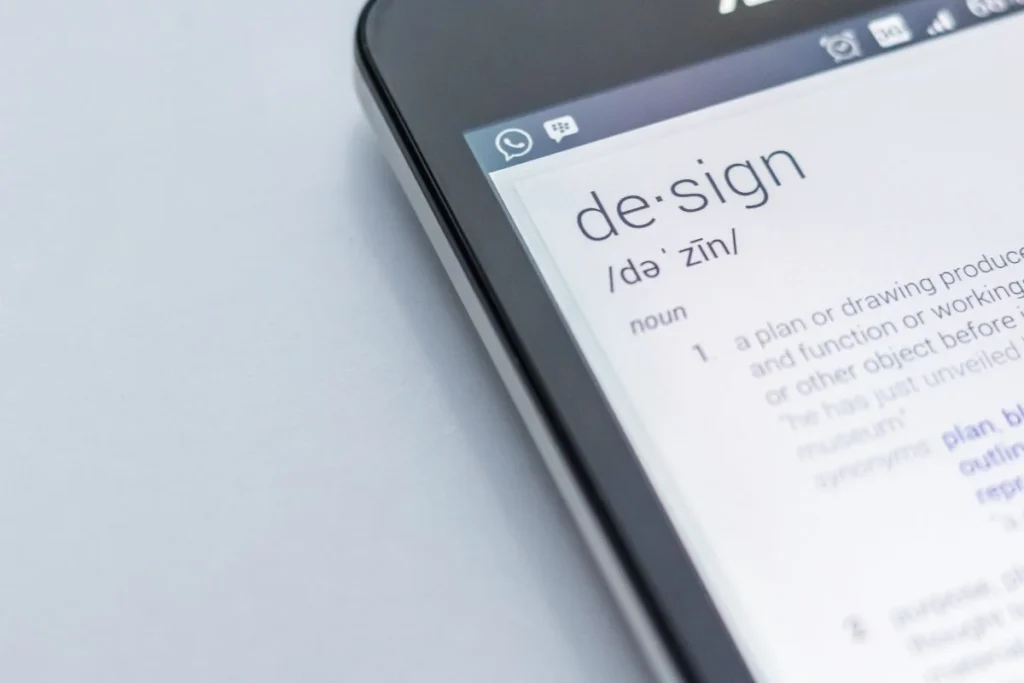Brand and digital marketing
Product and tech
Why is it important to increase design’s influence in your company?
March 7 2024

Yes, businesses should think less about design as a cost and more as a profit center.
Are you wondering what is a design centered business? Does your business put enough emphasis on design? What are the 2–3 best in class examples?
If you’ve developed a digital product or are currently developing one, chances are you’ve been asked this question. Indeed, as technology redefines the way in which organisations develop, conceive and deliver their products, design has been put at the centre of conversations.
Design, as it is understood in this context, refers more precisely to design thinking, which is ‘a process for creative problem solving. It encourages organisations to focus on the people they’re creating for, which leads to better products, services, and internal processes. […] In employing design thinking, you’re pulling together what’s desirable from a human point of view with what is technologically feasible and economically viable.’ according to IDEO, a global design firm. Therefore, a design centered organisation is one which has put design thinking at its core: it is structured so that offering the most pleasing and desirable solution to a problem defines everything it does.
Design Thinking is a method of co-designing a product with the user. It really anchors the notion of iterative loop and ensures not to create a product disconnected from users. By addressing a pain point rather than just problem solving, you’ll be able to ask the right questions, at the right time, and answer them in a way that creates value for the user. In a context of digital transformation, Design Thinking is positioned as the cornerstone of innovation. It helps create integrated and personalized experiences that go beyond the expressed needs of the customer, through empathetic research and a deep understanding of their challenges. It acts as a lever to develop an offer that meets the needs of the customer, and not the other way around.
Many companies focus their design on what is called ‘generative design researches’, companies who are not only going after solutions based on existing design (as per ‘evaluative researches’) but also focusing on opportunity around the world while defining a problem and finding a solution. Real design leadership and innovations come from looking outside the organization. Companies like Apple, Netflix, AirBnB and others have succeeded through the perspective of design to find a better balance between the purely technological aspects and the human values of the company, by putting the customers and the uses at the center of their attention.
A very good example of this transformation is IBM, a company historically very focused on technology and IT architectures (technology push) which has recruited in recent years thousands of designers around the world in their ‘design studios’ allowing to rethink the relationships that the company develops with its customers and stakeholders and to respond in a more relevant way to their needs. In addition, IBM has developed consulting services around the design thinking method and thus developed a real business with its own transformation.
A second example could be Apple, probably the most famous design centered company in the world, Apple has adopted design thinking after Steve Jobs’ return in 1997. Taking back control of a struggling company, he focused on simplicity and holistic customer experiences. To do so, the company significantly reduced its product offering and invested heavily in the way it distributed its products to customers. As a result, Apple has produced distinctive products that are immediately recognizable and its stores, which offer a unique experience, are key to the company’s success.
As another example, when Indra Nooyi became CEO of Pepsi in 2006, the company was experiencing a significant decrease in revenue as the company failed to reinvent itself. As a result, she decided, in 2012, to hire Mauro Porcini as Chief Design Officer. Whereas the company used to focus solely on how its product would taste or look like in its packaging, it shifted to a design-led approach and put user experience at the forefront of everything it did. Pepsi ‘had to rethink the entire experience, from conception to what’s on the shelf to the postproduct experience’, which led it to come up with Pepsi Spire, a futuristic touch screen fountain machine that has set itself apart from its competitors’ similar products. Today, Nooyi has become one of America’s most acclaimed CEOs and Pepsi has become a case study for design-led success.

So, why has design gathered so much attention in the past years? Why is it important for businesses to put design at the center of their organisations, and how can they do so?
Technology has increased the urgency to offer incredible user experiences, but it has also provided the right tools to do so: companies should rethink their processes and structure to deliver on the promise of digital products, and they have never had as many resources to achieve this.
Being design-centric also helps teams collaborate more easily and jointly anticipate all creative, technical and feasibility issues. The frustrations associated with development are reduced and the focus can be maintained on the user’s needs. It promotes the creation of very important bonds between the different divisions of a company. The resulting team cohesion thus enhances the work of each individual.
‘71% of companies say that Design Thinking has improved the work culture in their organizations; and 69% say it makes their innovation processes more efficient.’
To become more design centric, companies should translate their objective into a concrete daily methodology.
First, every project needs to integrate a Product Owner in charge of representing the user view. This Product Owner becomes the central point and the synchronizer between the project’s stakeholders, such as product managers, data analysts, user experience designers and engineers. Ideally, the Product Owner also makes sure the top management is integrated into the field, for instance making C-Level executives spend time with customers. Indeed, a design centered business can only be a success when supported and understood by the top management.
Then, project delivery is a constantly improving process, involving prototyping and iterative learning with end-users. Each new feature developed needs to be tested and refined before being launched at a larger scale. Prototypes can be tested and successfully proven on delimited geographic areas before being expanded.
Finally, design performance can be monitored through different metrics. To name but a few examples, KPIs such as increase in conversion rate, satisfaction ratings and usability assessments are to be followed to express the implementation success and the potential need for improvement. Sharing these metrics among the team members also enables them to reward success and foster dynamism in the team.
Is your business able to retain talented designers? What should you look after when hiring a designer?
A designer will have to collaborate with all employees in a short time frame (during sprint periods ~from 1 to 4 weeks on average) and will share feedback and iterate with everyone to move forward. Perfect communication is key. Everyday tasks are about brainstorms through incentive programs, where designers feel autonomous and encouraged to listen to all voices at the same scale (no matter the hierarchy), gather the best ideas and rapidly create a prototype. It will require people to be humble and realistic, to continuously add value to the customer experience while taking into account tech feasibility and business requirements to make it real. When hiring a designer, you should give equal importance to his design skills but also his human open mindedness.
If you want to know more about design and Singulier, do not hesitate to get in touch with Rob Fenton on LinkedIn.

About Rob Fenton
Expert Partner, Head of Brand and Marketing Practice
Rob is an Expert Partner at Singulier, leading the Marketing Practice. He leads a team of Singulier experts that advise private equity funds and their portfolio companies on performance marketing, brand positioning, and customer acquisition, helping drive scalable, high-ROI growth post-investment and ahead of exit.







